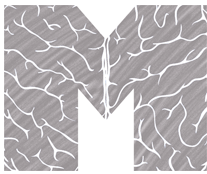
Monarch
The monarch, called the "wanderer" in New Zealand, is the most well-known butterfly in North America. Rarely it is found in the UK and Western Europe: it may be carried by ship or arrive by the current of a just-right wind. Its name dates to Samuel Scudder, in 1874, who described it as one of the largest butterflies and as ruling a vast domain. Although the monarch has six legs, it carries the front two next to its body and does not use them for walking.
There are no other butterflies that migrate like the monarch does: regularly both north and south. In fact, a single butterfly cannot make the journey in its own lifetime. As monarchs only live for about two months, the journey is accomplished in two- to four-generation cycles. It is a mystery how the butterflies know where to return when they arrive back north. But it is interesting that a chemical found on the anetennae of the monarch is sensitive to the violet-blue light spectrum. In the presence of this light, that chemical, cryptochrome, can serve as a compass for orientation. It is also interesting that monarch larva consume cardiac glycosides from the milkweed they digest. These chemicals are poisonous to birds, which usually avoid preying on the monarch. Monarchs endure in a variety of habitats, but they typically overwinter in conifer groves.
Read more here.
The monarch illustration was prepared using colored pencils on vellum, which allows for a more blended surface. © 1998 Laura Maaske - Medimagery LLC
Return to Monarch Illustration.
+thison

Monarch
The monarch, called the "wanderer" in New Zealand, is the most well-known butterfly in North America. Rarely it is found in the UK and Western Europe: it may be carried by ship or arrive by the current of a just-right wind. Its name dates to Samuel Scudder, in 1874, who described it as one of the largest butterflies and as ruling a vast domain. Although the monarch has six legs, it carries the front two next to its body and does not use them for walking.
There are no other butterflies that migrate like the monarch does: regularly both north and south. In fact, a single butterfly cannot make the journey in its own lifetime. As monarchs only live for about two months, the journey is accomplished in two- to four-generation cycles. It is a mystery how the butterflies know where to return when they arrive back north. But it is interesting that a chemical found on the anetennae of the monarch is sensitive to the violet-blue light spectrum. In the presence of this light, that chemical, cryptochrome, can serve as a compass for orientation. It is also interesting that monarch larva consume cardiac glycosides from the milkweed they digest. These chemicals are poisonous to birds, which usually avoid preying on the monarch. Monarchs endure in a variety of habitats, but they typically overwinter in conifer groves.
Read more here.
The monarch illustration was prepared using colored pencils on vellum, which allows for a more blended surface. © 1998 Laura Maaske - Medimagery LLC
Return to Monarch Illustration.
+thison









